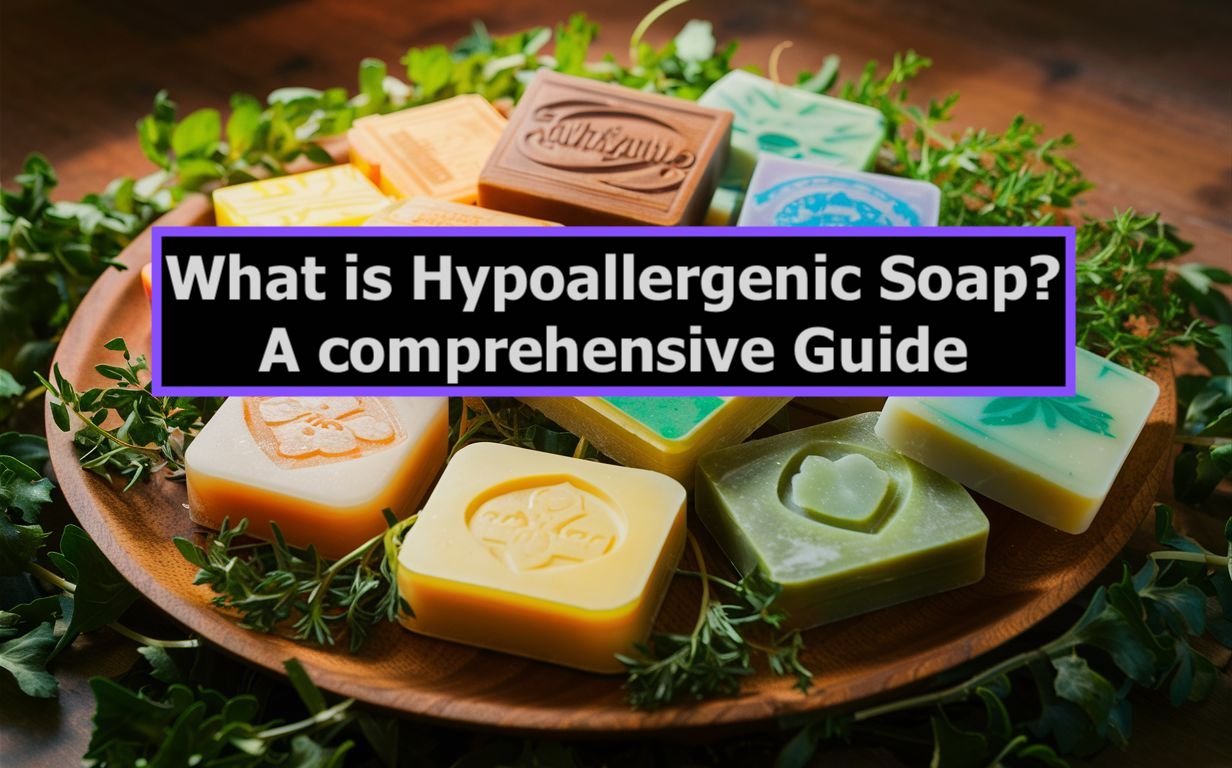Clay, a seemingly innocuous material with historical significance and artistic allure, can hold a surprising secret for a small percentage of individuals: the potential to trigger allergic reactions. While Clay itself is generally safe, the fine particles generated during handling or processing, known as clay dust, can present health concerns for those with dust sensitivities or, in more specific cases, clay dust allergies. This article delves deeper into this unexpected phenomenon, empowering you to understand, identify, and effectively manage a clay dust allergy.

Clay Dust Allergy Symptoms
Clay dust allergy (different from dust allergy and the synthetic clay called polymer clay)primarily affects the respiratory system, mirroring symptoms experienced with other dust allergies. However, the severity and specific symptoms can vary depending on the individual and the extent of exposure. Common symptoms to be aware of include:
- Coughing: This is a frequent and often initial symptom, triggered by the irritation of the airways as they attempt to expel the inhaled clay dust particles. A persistent cough can be disruptive and lead to discomfort, particularly during nighttime.
- Sneezing: The body’s natural defense mechanism kicks in, expelling irritants like clay dust through frequent sneezing episodes. This reflex aims to clear the airways and prevent further irritation.
- Shortness of breath: In more severe cases, individuals might experience difficulty breathing due to the inflammation and constriction of the airways caused by the allergic reaction. This tightness in the chest can be concerning and requires immediate medical attention.
- Wheezing: A characteristic whistling sound during breathing can indicate airway narrowing, indicating a more severe reaction that necessitates immediate medical intervention. Early recognition and treatment of these symptoms are crucial to prevent complications.
- Eye irritation: While less common, clay dust can also irritate the eyes, causing redness, watering, and itching. This discomfort can be further exacerbated by rubbing the eyes, potentially leading to additional complications.
Immune System’s Response When You’re Allergic to Clay Dust
Clay dust allergy involves the immune system’s overreaction to specific substances present in the dust. The immune system mistakenly identifies these particles as harmful and triggers a cascade of inflammatory responses, leading to the abovementioned symptoms.
Here’s a deeper understanding of the underlying cause:
- Specific Substances: While Clay is a natural material, it can contain various elements that can trigger an immune response in sensitive individuals. The primary culprit responsible for clay dust allergies is often:
- Cobalt: This metal is sometimes found in certain types of Clay and can also be present in glazes used in pottery. Individuals with a pre-existing cobalt allergy are more susceptible to experiencing reactions upon exposure to clay dust containing this metal.
- Immune System Dysregulation: While the exact mechanisms are still being researched, factors like genetic predisposition and environmental triggers can also contribute to the development of allergies, including clay dust allergies. Understanding these factors can help research and develop future preventative and treatment strategies.
Clay Dust Allergy – Risk Factors:
Certain factors might increase the risk of developing a clay dust allergy:
- Pre-existing respiratory conditions: Individuals with asthma, chronic obstructive pulmonary disease (COPD), or other respiratory issues are generally more vulnerable to experiencing adverse reactions from dust exposure, including clay dust. Their already sensitive airways are more susceptible to inflammation and irritation triggered by the inhaled particles.
- Atopy: A predisposition to developing allergies, often characterized by a personal or family history of allergies like eczema, hay fever, or food allergies, can also increase the risk of clay dust allergies. This underlying tendency can contribute to an overreactive immune system, making individuals more susceptible to developing allergies to various triggers.
- Occupational exposure: Individuals working in professions with frequent exposure to clay dust, such as potters, sculptors, construction workers in specific environments, and even miners, are more likely to develop this allergy due to the increased and consistent exposure to clay dust particles.
Diagnosis of Clay Dust Allergy
If you suspect a clay dust allergy, consulting a healthcare professional is crucial for accurate diagnosis and determining the best course of action. They may employ various methods to reach a diagnosis:
- Medical history review: Discussing your symptoms, potential risk factors, and any past allergy diagnoses can provide valuable clues for the doctor. Sharing details about your work environment and hobbies involving Clay can be particularly helpful.
- Physical examination: The doctor might examine your lungs using a stethoscope to check for signs of airway inflammation or breathing difficulties. This examination can help assess the severity of the reaction and identify potential complications.
- Allergy testing: Skin prick testing or blood tests can help pinpoint specific allergens, including clay dust if a suspected allergy exists. These tests can confirm the presence of an allergy and guide the development of a personalized management plan.
Living with a Clay Dust Allergy: Embracing Alternatives and Prioritizing Wellbeing
While a clay dust allergy can present limitations, numerous opportunities for creative expression and fulfilling activities remain available. Here are some encouraging thoughts and strategies to adopt:
- Explore alternative materials: Numerous safe and readily available materials can be substituted for Clay in various applications, depending on your creative pursuits. Consider exploring:
- Air-dry Clay: Certain types are formulated to be hypoallergenic and can be a suitable option for sculpting and crafting projects, offering similar creative possibilities without the risk of dust exposure.
- Polymer clay: This oven-bake Clay comes in various colors and textures, offering a versatile alternative for crafting and jewelry making. It allows for intricate designs and detailed work. Polymer clay is also known to cause allergic reactions, so a bit of testing might be needed on your part.
- Modeling dough: Non-toxic modeling dough can be a fun and safe option for younger children who might be interested in exploring creative activities, encouraging their artistic development while prioritizing their health.
- Focus on alternative art forms: The world of art is vast and diverse, offering a multitude of avenues for creative expression. Consider exploring other mediums that don’t involve clay dust exposure, such as:
- Painting: Whether using watercolors, acrylics, or oils, painting allows for exploring color, texture, and composition, fostering creativity and emotional expression.
- Drawing: With various drawing materials like pencils, charcoal, or pastels, individuals can explore line work, shading, and creating detailed illustrations or abstract interpretations.
- Digital art: Utilizing software and tablets, individuals can create stunning digital artwork, combining traditional artistic concepts with technological advancements, opening doors to new creative possibilities.
- Embrace technology and online resources: Numerous online tutorials, workshops, and communities can provide valuable learning and inspiration, allowing you to continue honing your artistic skills and exploring new creative avenues despite a clay dust allergy.
- Prioritize your health: By prioritizing your well-being and taking necessary precautions, you can continue participating in activities you enjoy while protecting yourself from potential allergic reactions. Always remember to:
- Consult your doctor: Regular checkups and communication with your healthcare professional are crucial for managing your allergy and ensuring your overall well-being.
- Maintain a clean workspace: Regularly cleaning your workspace and tools with a damp cloth or vacuum cleaner can help minimize dust accumulation and potential exposure.
- Educate others: Sharing information about your allergy with colleagues, friends, and family members can help ensure they understand the precautions needed and create a supportive environment.
Looking Ahead: The Future of Clay Dust Allergy Research and Management
Research and advancements in clay dust allergy management are constantly evolving, offering hope for improved diagnostic tools and potential treatment options:
- Hypoallergenic Clay Alternatives: Developing hypoallergenic clay formulations with modified compositions or specific additives could offer safe and inclusive options for individuals with allergies, allowing broader participation in Clay activities without compromising their health.
- Improved Diagnostic Techniques: Ongoing research might lead to more accurate and efficient methods for diagnosing clay dust allergies, enabling quicker and more personalized management strategies. This could involve advancements in allergy testing or the development of non-invasive diagnostic methods.
- Immunotherapy: While still in the early stages of exploration for dust allergies, future immunotherapy advancements might offer long-term solutions by desensitizing the immune system to the specific allergens in clay dust, potentially reducing or eliminating the allergic response over time.
Conclusion: Clay Dust Allergy
Despite its potential to trigger allergies in some individuals, Clay remains a valuable material with historical significance and artistic applications. By understanding the nature of clay dust allergies, recognizing the signs and symptoms, and adopting appropriate management strategies, individuals can continue their creative pursuits and explore alternative avenues for artistic expression. With ongoing research and advancements, the future holds promise for improved diagnostic tools, potential treatment options, and the development of hypoallergenic clay alternatives, creating a more inclusive and accessible environment for everyone to engage with this unique material.
Remember, maintaining awareness, prioritizing your health, and embracing creativity in its diverse forms is key to navigating a clay dust allergy and fulfilling your artistic aspirations.
FAQs: Clay Dust Allergy
1. What is clay dust?
Clay dust consists of fine particles that are produced during the processing, shaping, and sanding of clay. These particles can become airborne and are small enough to be inhaled or come into contact with the skin.
2. Is clay dust harmful?
Yes, clay dust can be harmful. Inhaling clay dust can lead to respiratory issues, including silicosis, a lung disease caused by inhaling silica particles commonly found in clay. Skin contact can also cause irritation, especially for those with sensitive skin or existing allergies.
3. Can you be allergic to clay dust?
Yes, it is possible to be allergic to clay dust. Individuals can develop allergies to the components of clay, particularly the silica, which can manifest as respiratory symptoms or dermatological reactions.
4. What are the symptoms of a clay dust allergy?
Symptoms of a clay dust allergy may include respiratory distress such as coughing, wheezing, and shortness of breath, skin irritation, and in severe cases, allergic dermatitis. Chronic exposure can lead to more serious conditions like silicosis.
5. How can I tell if I’m allergic to clay dust?
If you experience symptoms such as difficulty breathing, persistent cough, or skin rashes after being exposed to clay dust, you might be allergic. It’s important to consult with a healthcare provider for accurate diagnosis and management.
6. Is exposure to clay dust a risk for everyone?
While not everyone will develop an allergy to clay dust, long-term exposure increases the risk of developing respiratory conditions. Workers in pottery, ceramics, and construction are particularly at risk and should use protective measures to minimize exposure.
7. What protective measures can reduce the risk of clay dust allergy?
Wearing protective gear such as N95 respirators, maintaining proper ventilation in work areas, using wet methods for cutting or sanding clay to reduce dust, and regular cleaning to remove dust residues can significantly reduce the risk of allergy.
8. What should I do if I think I have been affected by clay dust?
If you suspect that clay dust is affecting your health, seek medical advice promptly. Reporting your symptoms and the nature of your exposure to a healthcare provider can aid in diagnosis and treatment.
9. Can clay dust exposure be treated?
Treatment for clay dust exposure primarily involves managing symptoms and preventing further exposure. Medications may be prescribed to treat respiratory symptoms, and in cases of skin irritation, topical ointments may be recommended. Avoiding further exposure is crucial.
10. How can workplaces be made safer from clay dust?
Workplaces can improve safety by implementing dust control systems such as localized extraction (ventilation) and air purifiers, enforcing the use of personal protective equipment, and conducting regular health surveillance to monitor the effects of dust exposure on workers.



